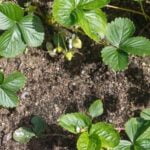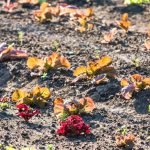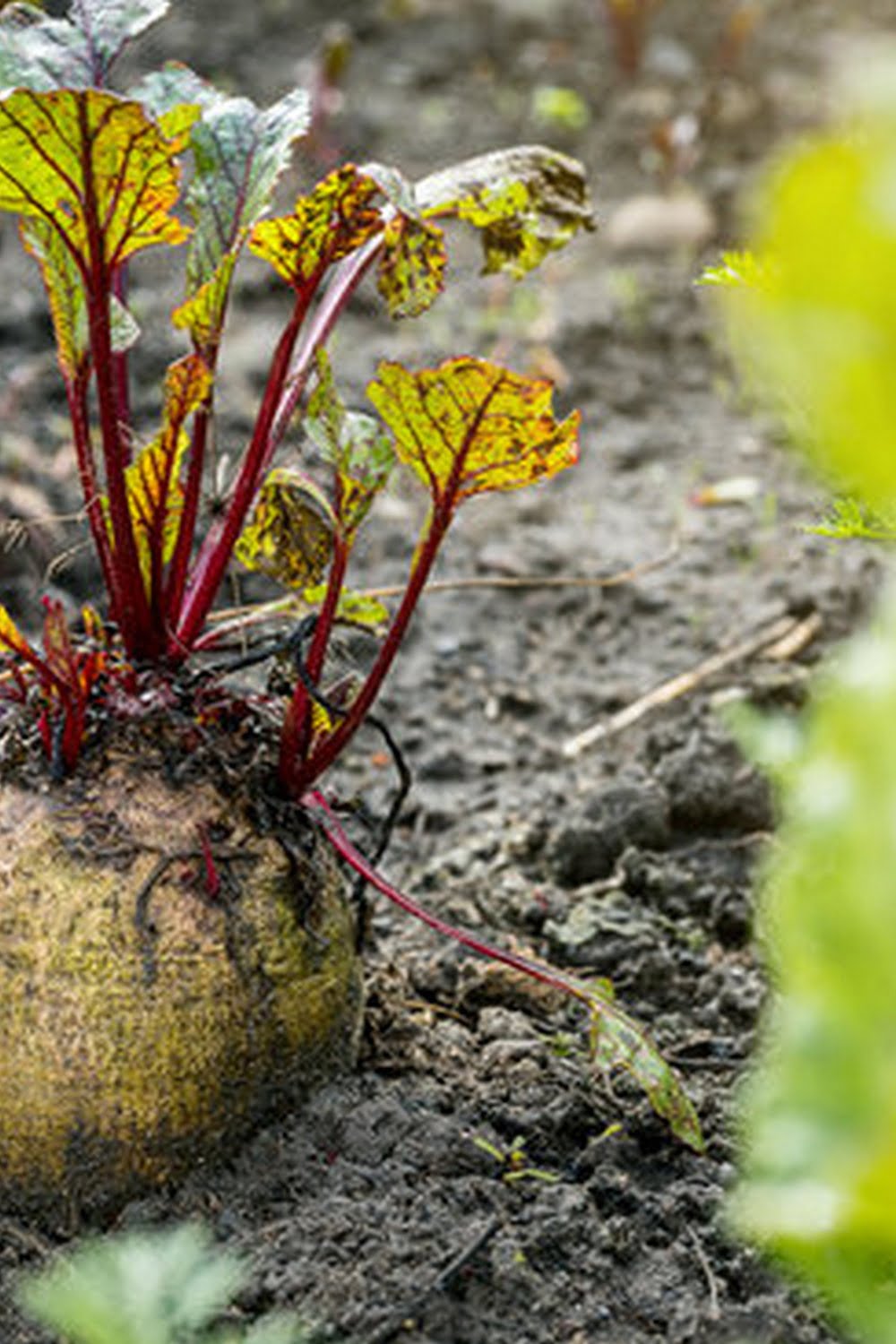Are you interested in starting your own vegetable garden but don’t know where to begin? Look no further. In this comprehensive guide, we will walk you through everything you need to know to get started with vegetable gardening.
From selecting the right tools and equipment to understanding soil, watering, and sunlight needs, we’ve got you covered. Plus, as a bonus, we’ll provide you with a free download of the beginner’s guide to vegetable gardening to help you succeed.
Vegetable gardening is an excellent hobby for beginners for many reasons. Not only does it provide a sense of accomplishment and pride, but it also allows you to enjoy fresh, homegrown produce. Whether you have a green thumb or are completely new to gardening, this guide will equip you with the knowledge and skills needed to cultivate your own thriving vegetable garden.
In this article, we’ll cover important topics such as selecting the perfect location for your garden, choosing the best vegetables for beginners, planting and maintaining your garden, dealing with common pests and diseases, and harvesting your bountiful crops. With our easy-to-follow tips and tricks, you’ll be well on your way to becoming a successful vegetable gardener in no time.
And don’t forget about the bonus – our free downloadable resource is packed with even more valuable information to support your gardening journey.
Getting Started With the Right Tools and Equipment
When it comes to starting your own vegetable garden, having the right tools and equipment can make all the difference. Here are some essential tools and supplies that every beginner gardener should have:
1. Gardening gloves: Protect your hands from dirt, thorns, and other potential hazards while working in the garden.
2. Hand trowel: A small tool with a scoop-like blade, perfect for digging small holes for planting seeds or transplants.
3. Pruning shears: Used for trimming and shaping plants, as well as cutting back dead or damaged foliage.
4. Watering can or hose: Essential for keeping your vegetable plants hydrated, especially during dry spells.
5. Garden fork: Ideal for turning and aerating the soil before planting, as well as mixing in compost or other amendments.
6. Rake: Use to smooth out soil, remove debris, and create tidy rows in your garden.
In addition to these basic tools, it’s also important to have high-quality seeds or seedlings, organic fertilizer, and mulch on hand to help promote healthy growth in your vegetable garden.
Remember that investing in good quality tools and equipment will not only make gardening more enjoyable but also contribute to the success of your vegetable garden in the long run. With these essentials in place, you’ll be well-equipped to start your gardening journey with confidence.
To get a comprehensive understanding of how to use these tools effectively and how to set up a successful vegetable garden from scratch, consider downloading the beginner’s guide to vegetable gardening free download This resource provides valuable information for beginners on everything from tool maintenance to garden layout planning.
Selecting the Perfect Location for Your Vegetable Garden
When it comes to vegetable gardening, one of the most important factors for success is choosing the right location for your garden. The ideal spot should receive plenty of sunlight, have good soil drainage, and be easily accessible for regular maintenance. Here are some tips to help you select the perfect location for your vegetable garden:
Tips for Selecting the Perfect Location
- Look for a spot that receives at least 6-8 hours of sunlight per day. Vegetables need plenty of sunshine to thrive and produce a bountiful harvest.
- Ensure that the area has good soil drainage to prevent waterlogging, which can lead to root rot and other issues. If your soil has poor drainage, consider building raised beds or improving the soil with organic matter.
- Choose a location that is easily accessible for watering, weeding, and harvesting. The more convenient it is to tend to your garden, the more likely you are to stay on top of maintenance tasks.
In addition to these considerations, it’s also important to take into account any potential obstacles such as nearby trees or buildings that could cast too much shade or block airflow. By carefully selecting the perfect location for your vegetable garden, you’ll set yourself up for a successful growing season.
Don’t forget to grab your free copy of The Beginner’s Guide to Vegetable Gardening for a comprehensive resource that will help you succeed in your gardening journey.
Choosing the Best Vegetables for Beginners
When it comes to starting a vegetable garden as a beginner, choosing the right vegetables to plant is crucial. Not all vegetables are created equal, and some are much easier to grow than others. Here are some tips for choosing the best vegetables for beginners.
Easy-to-Grow Vegetables
As a beginner, it’s important to start with vegetables that are relatively low-maintenance and easy to grow. Some great options include tomatoes, lettuce, cucumbers, zucchini, and green beans. These vegetables are not only easy to care for, but they also tend to be resilient and forgiving, making them perfect for those new to gardening.
Consider Your Climate
Another important factor to consider when choosing vegetables for your beginner garden is your climate. Certain vegetables thrive in specific climates and growing conditions. For example, if you live in a hot and sunny area, you may have better luck with heat-loving plants like peppers and eggplant. On the other hand, if you live in a cooler climate, leafy greens like spinach and kale may be a better choice.
Space and Time Constraints
When selecting vegetables for your first garden, also consider the space you have available and the amount of time you can dedicate to maintenance. If you have limited space, opt for compact plants like cherry tomatoes or bush beans. Additionally, if you have a busy schedule, choose low-maintenance crops that require minimal care.
By considering these factors when choosing your vegetables, you can set yourself up for a successful first gardening experience. And remember, if you’re looking for more in-depth information on vegetable gardening as a beginner, be sure to check out the beginner’s guide to vegetable gardening free download – it’s an invaluable resource filled with tips and advice to help you succeed.
Understanding Soil, Watering, and Sunlight Needs
Soil Composition
The first step in understanding soil for your vegetable garden is to test the composition of your soil. You can do this by purchasing a DIY testing kit or by sending a soil sample to a professional lab.
The ideal soil composition for vegetable gardening is loamy soil, which has a balanced mix of sand, silt, and clay. If your soil is lacking in any area, you can amend it with the appropriate additives to create the best environment for your vegetables.
Watering Requirements
Proper watering is crucial for a successful vegetable garden. Different vegetables have different water needs, so it’s important to research the requirements of each type of plant you plan to grow. In general, most vegetables prefer consistent moisture without being waterlogged. Using mulch around your plants can help retain moisture and reduce the need for frequent watering.
Sunlight Needs
Sunlight is another essential factor to consider when planning your vegetable garden. Most vegetables require at least 6 hours of sunlight per day to thrive. Be sure to select a location for your garden that receives adequate sunlight, or consider using raised beds or containers that can be moved to sunnier spots throughout the day.
By understanding the specific soil, watering, and sunlight needs of the vegetables you are growing, you will be better equipped to provide them with the optimal conditions for healthy growth and bountiful harvests.
Remember that all this valuable information can also be found in The Beginner’s Guide to Vegetable Gardening free download – a comprehensive resource that covers everything you need to know about starting and maintaining a successful vegetable garden as a beginner.
Planting and Maintaining Your Vegetable Garden
Once you have selected the perfect location for your vegetable garden and gathered the necessary tools and equipment, it’s time to start planting. When planting your vegetables, it’s important to follow spacing guidelines to ensure that each plant has enough room to grow. This will help prevent overcrowding and competition for resources such as sunlight, water, and nutrients. Additionally, be sure to follow the recommended planting depth for each type of vegetable.
After planting, it’s crucial to maintain your garden by regularly watering, weeding, and monitoring for any signs of pests or diseases. Depending on the weather and the specific needs of your vegetables, you may need to water them every day or every few days. Weeding is also essential to prevent unwanted plants from stealing nutrients from your vegetables.
In addition to watering and weeding, it’s important to monitor your vegetable garden for any signs of pests or diseases. Common pests include aphids, caterpillars, and slugs, while common diseases include powdery mildew and root rot. If you notice any issues, there are natural methods of pest control that can help protect your vegetables without using harmful chemicals.
| Vegetable | Spacing (Inches) |
|---|---|
| Tomatoes | 18-36 |
| Zucchini | 24-36 |
| Lettuce | 12-18 |
Dealing With Common Pests and Diseases
One approach to pest and disease management is to encourage natural predators to take care of the problem for you. This can be done by planting flowers that attract beneficial insects such as ladybugs, lacewings, and parasitic wasps. These insects feed on pests like aphids and caterpillars, helping to keep their populations in check.
Another organic method of pest control is using barriers such as row covers or netting to physically block pests from reaching your plants. These barriers can be especially effective against flying insects like cabbage moths or carrot flies. Additionally, practicing crop rotation and interplanting different vegetables can help disrupt pest cycles and reduce the likelihood of infestations.
When it comes to managing diseases in your vegetable garden, one key strategy is to practice good garden hygiene. This includes removing any diseased plant material promptly, avoiding overhead watering which can promote the spread of fungal diseases, and providing adequate air circulation between plants to minimize humidity levels that favor disease development. Furthermore, selecting disease-resistant varieties of vegetables whenever possible can also help prevent problems before they start.
Harvesting and Enjoying the Fruits of Your Labor
After all the hard work put into your vegetable garden, it’s finally time to reap the rewards. Harvesting your vegetables at the right time is crucial for optimal flavor and nutrition. Each vegetable has its own specific harvesting time, so it’s important to familiarize yourself with these details. For example, tomatoes should be harvested when they are fully colored but still firm, while lettuce is best when its leaves are young and tender.
Once you’ve harvested your vegetables, it’s time to enjoy them. There’s nothing quite like the taste of freshly picked produce from your own garden. Whether you’re making a salad with crisp lettuce, enjoying a sandwich with juicy tomatoes, or cooking up a stir-fry with crunchy bell peppers, the satisfaction of eating what you’ve grown is unmatched.
To make the most of your harvest, consider preserving some of your vegetables for later use. Canning, freezing, and pickling are all great methods for extending the shelf life of your produce. This way, you can continue to enjoy the fruits of your labor long after the growing season has ended.
Now that you’ve learned how to successfully harvest and enjoy your homegrown vegetables, don’t forget to download our comprehensive resource “The Beginner’s Guide to Vegetable Gardening Free Download“. This valuable guide is filled with tips and advice to help you succeed in your gardening journey. From planning and planting to maintaining and harvesting, this free download has everything you need to become a successful vegetable gardener.
Bonus
In conclusion, vegetable gardening is a wonderful and rewarding hobby for beginners to take on. Not only does it provide a source of fresh, nutritious produce, but it also allows individuals to connect with nature and enjoy the therapeutic benefits of working in the garden. By following the tips and guidelines provided in this article, beginners can feel confident in their ability to start their own vegetable garden and experience success.
When starting out with vegetable gardening, it’s important to have the right tools and equipment. This includes items such as a shovel, rake, gloves, and watering cans. Additionally, selecting the perfect location for your garden is crucial as it will impact the growth and health of your vegetables. Understanding soil composition, watering needs, and sunlight requirements are also important factors to consider when maintaining your garden.
To further support beginners in their vegetable gardening journey, there is a comprehensive resource available for free download: The Beginner’s Guide to Vegetable Gardening.Free Download This guide provides valuable information on various aspects of vegetable gardening such as plant selection, soil maintenance, pest control, harvesting techniques, and more. With this resource at hand, beginners will have access to a wealth of knowledge that will help them succeed in their gardening endeavors.
So why not give it a try today?
Frequently Asked Questions
What Is the Easiest Vegetable Garden for Beginners?
The easiest vegetable garden for beginners is a raised bed garden. These gardens provide better soil drainage and are easier to manage compared to traditional in-ground gardens. Raised beds also reduce the risk of weeds and pests, making them ideal for novice gardeners.
What Are the Best Vegetables for First Time Gardeners?
For first time gardeners, the best vegetables to grow are those that are low-maintenance and relatively easy to cultivate. Examples of such vegetables include tomatoes, peppers, lettuce, cucumbers, zucchini, and radishes. These plants tend to thrive in various conditions and don’t require extensive care.
What Is the Best Layout for a Vegetable Garden?
The best layout for a vegetable garden largely depends on the available space and personal preference. However, a common and effective layout is the row cropping method where plants are arranged in straight parallel rows.
This layout allows for easy access between rows for planting, watering, weeding, and harvesting. Additionally, it promotes good airflow and sunlight penetration for healthy plant growth.

If you’re looking to get into vegetable gardening, or are just looking for some tips on how to make your current garden better, then you’ve come to the right place! My name is Ethel and I have been gardening for years. In this blog, I’m going to share with you some of my best tips on how to create a successful vegetable garden.






